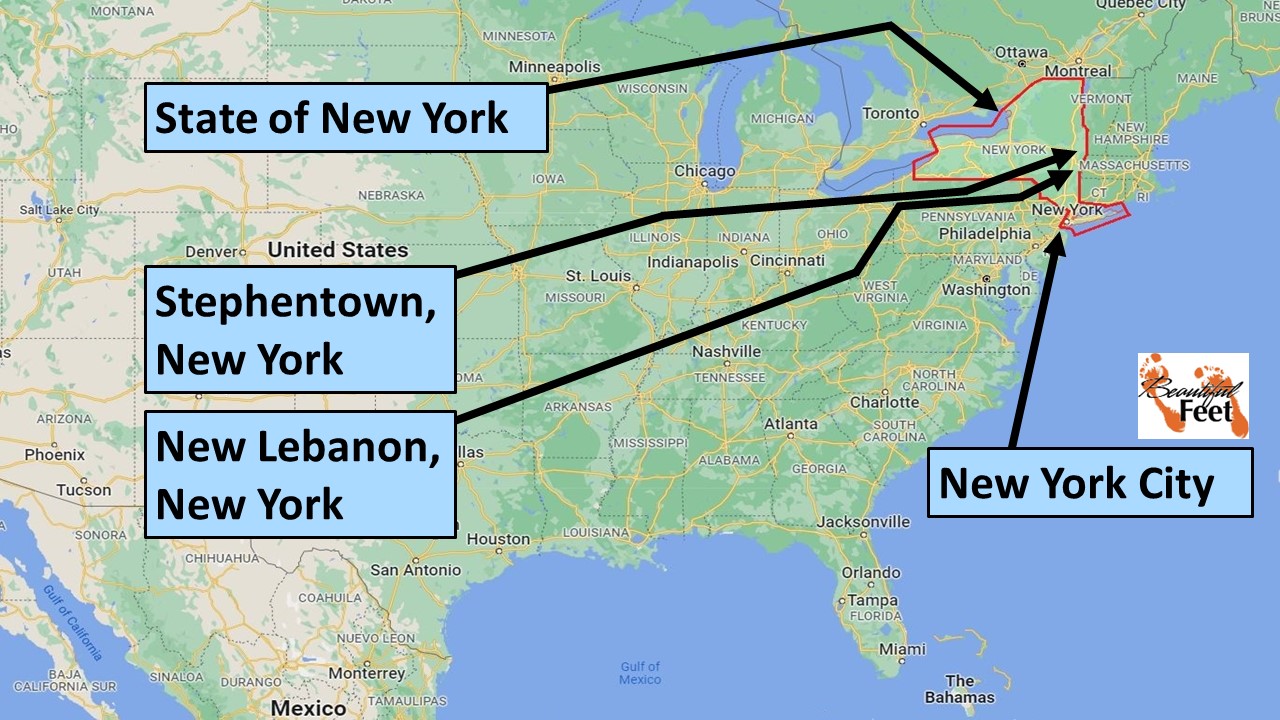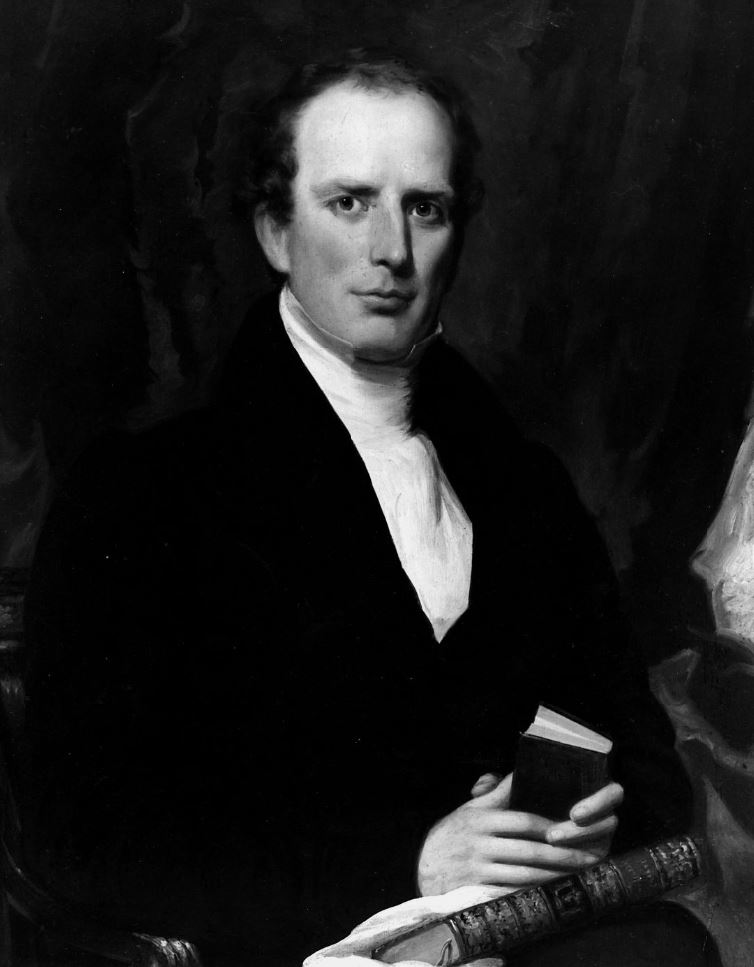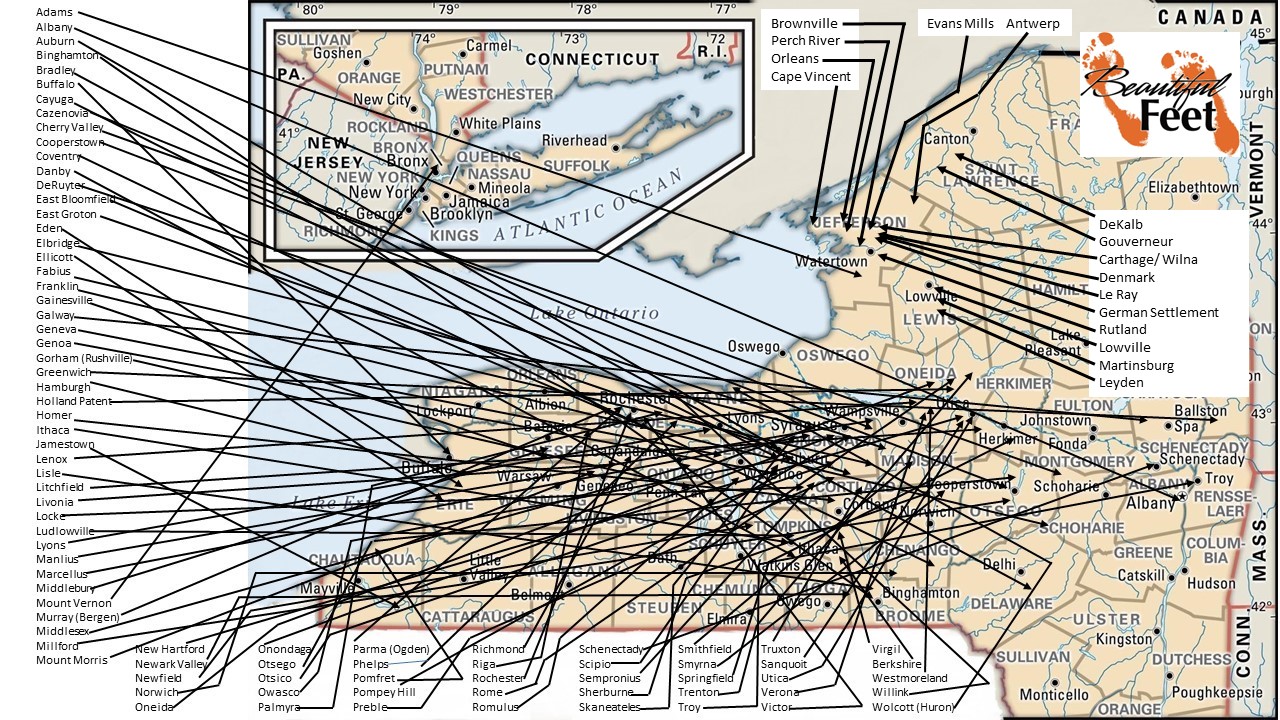


Charles Grandison Finney – Father of modern revivalism and the leading figure of the Second Great Awakening
Introduction
Charles G. Finney’s (1792-1875) unique methods of evangelism earned him the title of the “father of modern revivalism.” His methods paved the way for other mass-evangelists, like Dwight L. Moody, R. A. Torrey, John W. Chapman, Billy Sunday, and Billy Graham, who adapted and built upon Finney’s methods.
Background Information
With this revival account being one in a sequence of revivals during the life of Charles G. Finney, we recommend first reading our accounts of the initial revivals he was involved with in the northern and central part of New York State:
► 1824 Evans Mills German Settlement Revival
► 1824 Antwerp, New York Revival
► 1824 Revival at Perch River and Other Locations
► 1825 Revival in Gouverneur, New York
► 1825 Revival in De Kalb, New York
► 1825 Revival in Western, New York
► 1825 Revival in Rome, New York
► 1826 Revival in Utica, New York
► 1826 Revival in Auburn, New York
► 1826-1827 Revival in Troy, New York

State of New York: The black lines indicate locations where revival spread during the 1820s and 1830s. The area became known as the “Burned-Over District.”
From Troy to New Lebanon, then Stephentown
While Charles Finney was conducting the Troy, New York Revival, from October 26, 1826, till April 1827, a young lady from New Lebanon came to the town and was converted. That new convert returned to New Lebanon and engaged in highly successful evangelistic work. This encouraged the young lady’s pastor to have her return to Troy and invite Finney to come to New Lebanon to hold meetings.
Finney agreed to the request, and about his initial efforts in New Lebanon he said:
The Spirit of the Lord was poured out, and the revival soon went forward with great power. Very interesting incidents occurred almost every day. Powerful conversions were multiplied and a great and blessed change came over the religious aspect of the whole place. The most cultivated and influential of the inhabitants were converted.

Conditions in Stephentown, New York
About seven miles north of New Lebanon was the town of Stephentown. The pastor in that town, Rev. Aaron Jordan Bogue (1752-1826), was said to have allowed his congregation to be run “down under his influence, and he finally became an open infidel.”
That man’s actions destroyed the attitude of Christianity in that town, and it led to the closing of the church because the attendance was so low. This led the few remaining interested believers, numbering about 23 people, to hold meetings in the schoolhouse near the church.
That was the only congregation in that town. It was said that “the whole town was a complete moral waste.”
Finney’s Invitation to Stephentown
On Sunday, July 22, 1827, during a service Finney held in New Lebanon, a young lady from Stephentown, the only unmarried person from the congregation there, Maria Sackett, asked him to come to her town and hold meetings.
Finney initially refused, but on the second Sunday he preached in New Lebanon, Sackett asked him again, while expressing deep emotions. Finney felt something different come over him at that time and wrote about those emotions:
This state of things [in Stephentown], with what I had heard, began to take hold of me; and my mind began to be stirred to its deepest foundations in respect to the state of things in Stephentown.
Finney then told Sackett that if the elders of the church there would give a formal invitation, he would come and preach the next Sunday at 5 p.m.
Having obtained the formal invitation, Sackett delivered it to Finney, and he then agreed to preach in Stephentown the following Sunday.
Finney’s Arrival in Stephentown
After preaching twice on Sunday in New Lebanon, Finney was taken to Stephentown in a carriage. While in Stephentown, he stayed in the home of Maria Sackett’s parents, about one-half mile from the church, on the south side of the town.
While in his room resting, waiting for the time for the meeting to start, Finney could hear Maria Sackett in the room above him praying.
First Sunday Meeting in Stephentown
Though the congregation was very large when Finney preached his first sermon in Stephentown, nothing extraordinary occurred.
That night, while in his room at the Sacketts’ home, he heard Maria praying in the room above him again, nearly all night.
Maria seemed to be praying over the room in which I was nearly all night. I could hear her low, trembling voice, interrupted often by sobs and manifest weeping.
The next morning the Sacketts pleaded with him to come again, and he agreed to come back to preach the next Sunday at 5 p.m.
Second Sunday Meeting in Stephentown
On Finney’s second Sunday in Stephentown the building had more people, and because it was old, they had added extra supports to the balcony to support the extra weight of the additional people.
During this sermon, the people were more attentive than they were the first Sunday he was in town, and the people were much more somber.
Third Sunday Meeting in Stephentown
At this time Finney was preaching nightly at New Lebanon, as well as twice on Sundays—morning and early afternoon. After the last Sunday meeting, he would then travel 7 miles by horse to Stephentown and preach at 5 p.m.
It was during the third Sunday of Finney’s preaching in Stephentown that
the Spirit of God was poured out on the congregation.
With the wind of the Holy Spirit blowing through Stephentown, Finney left the residence he was staying at in New Lebanon and took up residence in Stephentown.

The revival in Troy and New Lebanon preceded the one in Stephentown
Extraordinary Prayer and Its Effects
As the spirit of prayer had been influencing Maria Sackett to invest considerable time in prayer, that same compulsiveness to prayer gripped Finney, and the results of their investment in prayer had startling results.
As Finney would preach, he recognized that his words became very powerful, so much so that the Lord’s presence would overwhelm even the strongest of men with conviction of their sin and render them helpless, with many cases of this occurring.
One example of the manifestation of this power was when Stephen Van Rensslaer Jolls (1776-1882) was sitting directly in front of Finney as he was preaching. Jolls was said to have been a man with “strong nerves” and was a prominent farmer in town. As Finney was preaching, he noticed the man fall from his seat,
and seemed as if he was in a fit. He writhed in agony for a few moments, and groaned with deep feeling; but afterwards became still, and nearly motionless, but entirely helpless. He remained in this state until the meeting was out, and they took him home. He was very soon converted, and became a powerful instrument in influencing his friends to come to Christ.
The Albany Christian Register wrote about this conviction power that was being manifested during these meetings:
Such has been the overwhelming power of truth upon the conscience, that cases have repeatedly occurred in the sanctuary, where sinners have been pressed down by the spirit, and remained so until joy succeeded sorrow.
This was just one of many cases that resembled what occurred with that man.
All Prominent Families Converted
There were several prominent families in the town who never attended the meetings, as they had been under the influence of the previous pastor, Rev. Bogue, who had become an “infidel.” (He evidently lost his faith in Christ and led others along the same path to destruction.)
When Bogue passed away (June 30, 1826), and his death being referred to as a horrible one, it slowly deteriorated the opposition he raised against Finney.
Sarah Seward, a resident of New Lebanon who was converted during the Troy, New York, Revival, heard about these families who were in opposition to revival. She went to Stephentown, and with her father being well-known and highly respected, she had influence among them.
When Seward made visits to the homes of these prominent families, she persuaded them to attend the meetings. After their attendance, they soon became personally interested in the meetings and no longer needed her influence to persuade them to keep attending.
Seward’s evangelistic efforts produced tremendous results, and nearly all of the most influential inhabitants of the town were converted and became members of the church before Finney left the town in the fall of 1827.
Main Characteristics of the Stephentown Revival
► The revival in Stephentown was more powerful than it had ever been in New Lebanon, with the work extending over into Hancock Village, Massachusetts.
► Extraordinary prayer is what drove the revival.
► The conviction of sin was overwhelming.
► There were 150 conversions.
► Conversions to Christ were immediate and powerful.
► The converts were stable, and their commitments to Christ, lasting.
► The converts, and all people, were very active in spreading the Good News throughout the region.
Finney Revival Account List
Access all accounts of Finney’s revivals using this link.
Primary Sources
► Chapter XVII Revival at Stephentown: The Memoirs of Charles G. Finney by Charles G. Finney
► The Memoirs of Charles G. Finney: The Complete Restored Text by Charles G. Finney
Secondary Sources
► Charles G. Finney by Wikipedia
► Charles Grandison Finney & the Second Phase of the Second Great Awakening by Christian History Institute
► Eerdman’s Handbook to Christianity in America by Mark A. Noll
► Fire From Heaven by Robert Evans
► Great Revivals and the Great Republic by Warren Candler
► Man of Like Passions: The Life Story of Charles Grandison Finney by Richard E. Day
► Memoirs of Revivals of Religion by Charles G. Finney
► New England Revivals by Bennet Tyler
Return to List of Revival Stories
Chet & Phyllis Swearingen:
Office: (260) 920-8248
romans1015@outlook.com
Beautiful Feet
P.O. Box 915
Auburn, IN 46706

